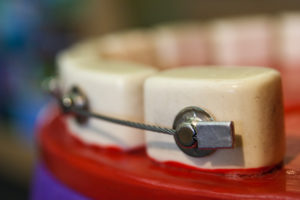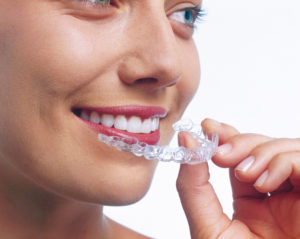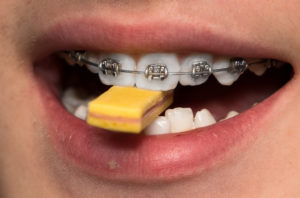When researching how to get straighter teeth it can be hard to know what the different options are and which is best suited to you. Two common options to choose from are whether to get traditional braces or Invisalign. But what exactly is the difference between the two?
Up until fairly recently, braces have been the only available option for those needing to straighten their teeth. However, in early 2000s, Invisalign came out as a way of straightening teeth without the traditional wires and brackets. Your lifestyle, preferences and the severity of treatment required may all impact which option is best for you.
Braces vs Invisalign
What Are Traditional Braces?
Braces have been around for a long time as a way of straightening teeth and fixing complex dental issues. They consist of metal brackets which are glued to your teeth and joined with wires and rubber bands. You can also choose from different coloured bands or more discreet coloured brackets.
What Is Invisalign – Invisible Braces?
Invisalign is designed to be invisible and it uses a series of aligners to gently straighten your teeth. It is made from a durable, BPA free plastic which means it is more discreet than braces and can easily be removed.
Why Choose Braces?
Advantages of Braces
Better for complex issues
- As braces are attached to the teeth, they are better for fixing more complicated dental issues such as large gaps, severe overcrowding or bite issues.
Does not rely on the patient to remember
- As braces cannot be removed and must be worn 24/7, there is no issue of forgetting to wear an aligner which could delay treatment.
- This also means that there is no issue of losing aligners
Disadvantages of Braces
Difficulty cleaning teeth
- Cleaning teeth may be more time consuming as you cannot remove braces.
- This means that food can get stuck more easily, and may lead to hygiene issues or plaque build-up if you do not take the time to properly brush and floss between the metal brackets and wires.
Unable to Eat Certain Foods
- With braces, you are unable to eat certain sticky foods, hard foods or chew gum which may get stuck in the braces.
- As Invisalign is removable, you can eat any foods you usually would.
Discomfort and Sports
- Braces can cause some discomfort from wires and brackets rubbing against your cheeks and inside your mouth, as well as when the wires are tightened.
- Braces may not be ideal for those who play contact sports regularly, as the brackets could cut lips and cheeks if hit in the face.
Why Choose Invisalign?
Advantages of Invisalign
More Discreet
- One of the most obvious advantages of Invisalign is that it is more discreet than braces. Compared to their bulkier counterpart, Invisalign is made from a clear plastic which fits snugly over teeth.
- This makes Invisalign ideal for those who are more self-conscious about their appearance or for those who work in a highly visible profession such as in sales.
Less Pain and Discomfort
- As there is no wire to cut into your lips, Invisalign is less painful than traditional braces.
- Likewise, when playing sport there is no worry about getting cuts from the wires, making Invisalign a great option for athletes or kids and teenagers who do a lot of sport.
Easy Hygiene and Cleaning
- As the aligners are removable, you can take them out when eating and drinking and brush and floss your teeth as normal.
- This makes maintaining good dental hygiene easier, in contrast to traditional braces which can be difficult to clean in between the metal brackets.
Shorter Time Frame
- Invisalign is also typically worn for a shorter time frame than braces.
Disadvantages of Invisalign
Not Suitable for All Cases
- When treatment is more severe, Invisalign may not be suitable. In this case it is best to consult with your dentist to find out if Invisalign is suitable for you.
Patients may forget to wear their aligners or lose them
- As the aligners are removable, it is easier for patients to forget to wear them for the recommended 20-22 hours per day.
- If aligners are lost, this may also lead to extra costs.
While it is impossible to exactly say which option is most suitable, this article outlines differences between the Invisalign and traditional braces, to give you a more solid understanding of your options. Ultimately, it is essential to speak with your dentist on which treatment is ideal for you. If you are interested in learning more about Invisalign or our other orthodontic options, give us a call or book an appointment online!






